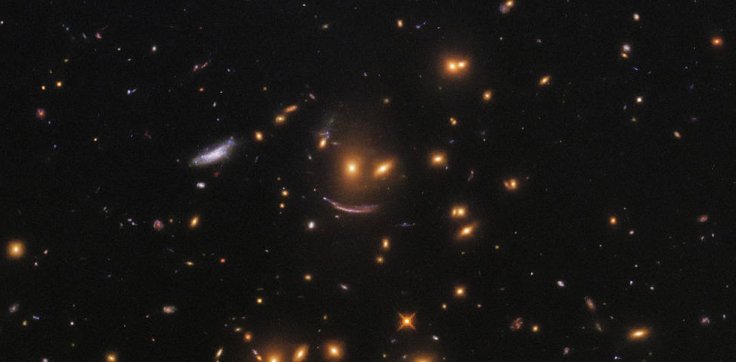
NASA's Hubble Telescope has captured several spooky space images in the past which includes a cosmic bat shadow and a weird shaped skull. And now, the telescope has spotted a friendly smiling face in the galaxy cluster SDSS J0952+3434.
The new image released by the American space agency shows two yellow lights just above an arc of light. The two yellow lights look like a pair of eyes, while the arc of light literally resembles a smiley lip.
"Just below center is a formation of galaxies akin to a smiling face. Two yellow-hued blobs hang atop a sweeping arc of light. The lower, arc-shaped galaxy has the characteristic shape of a galaxy that has been gravitationally lensed — its light has passed near a massive object en route to us, causing it to become distorted and stretched out of shape," wrote NASA on their website.
NASA revealed that the Hubble Telescope captured this image while exploring the space to know how new stars spring to life throughout the cosmos. Using the telescope's Wide Field Camera 3 (WFC3), the Hubble could easily view distant galaxies at an impeccable resolution.
As per NASA, stars take birth within a giant cloud of gas which they call stellar nurseries. These stellar nurseries usually grow unstable and will later collapse under gravity that will, in turn, emerge as the seeds that will grow into new stars.
"By analyzing the luminosity, size and formation rate of different stellar nurseries, scientists hope to learn more about the processes that can lead to the formation of a newborn star. Studying nurseries within different galaxies will provide information about star formation at different points in time and space throughout the universe," added NASA.
Recently, using the data collected by Hubble and Kepler telescope, a team of researchers at the Columbia University found the evidence of the first moon outside the solar system. The researchers who took part in the study also added that the natural satellite that orbits an exoplanet or a nonstellar extrasolar body is located eight thousand light years away from the earth.









